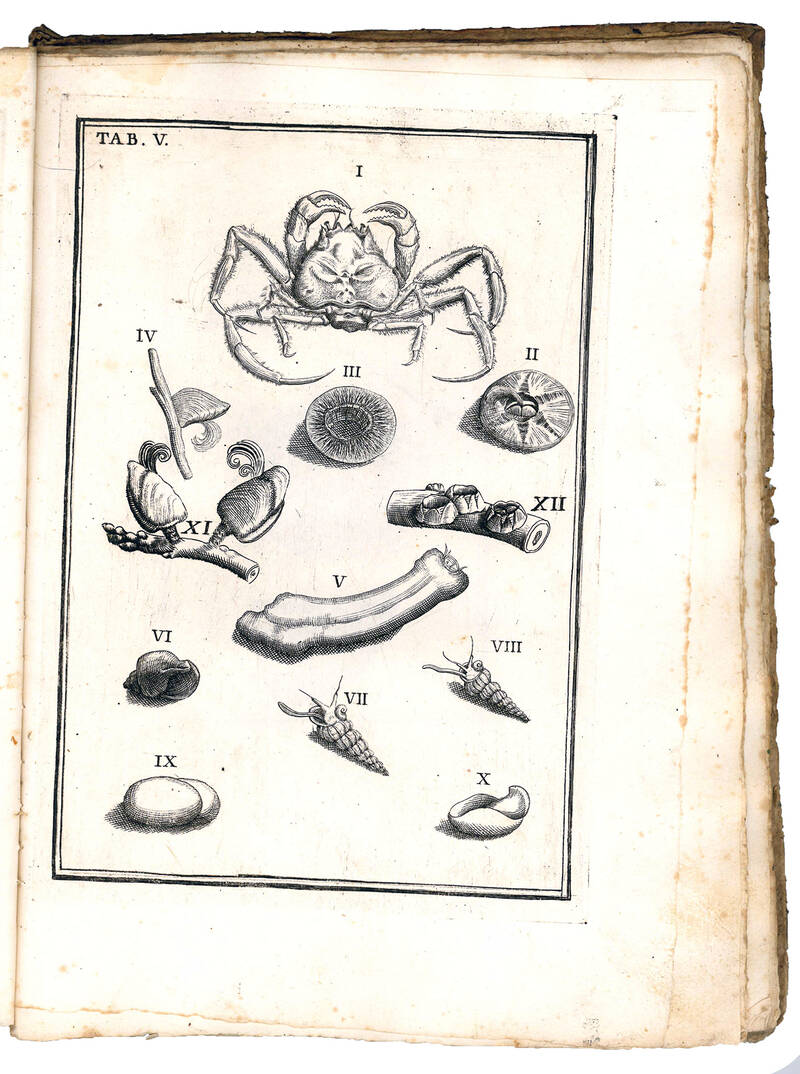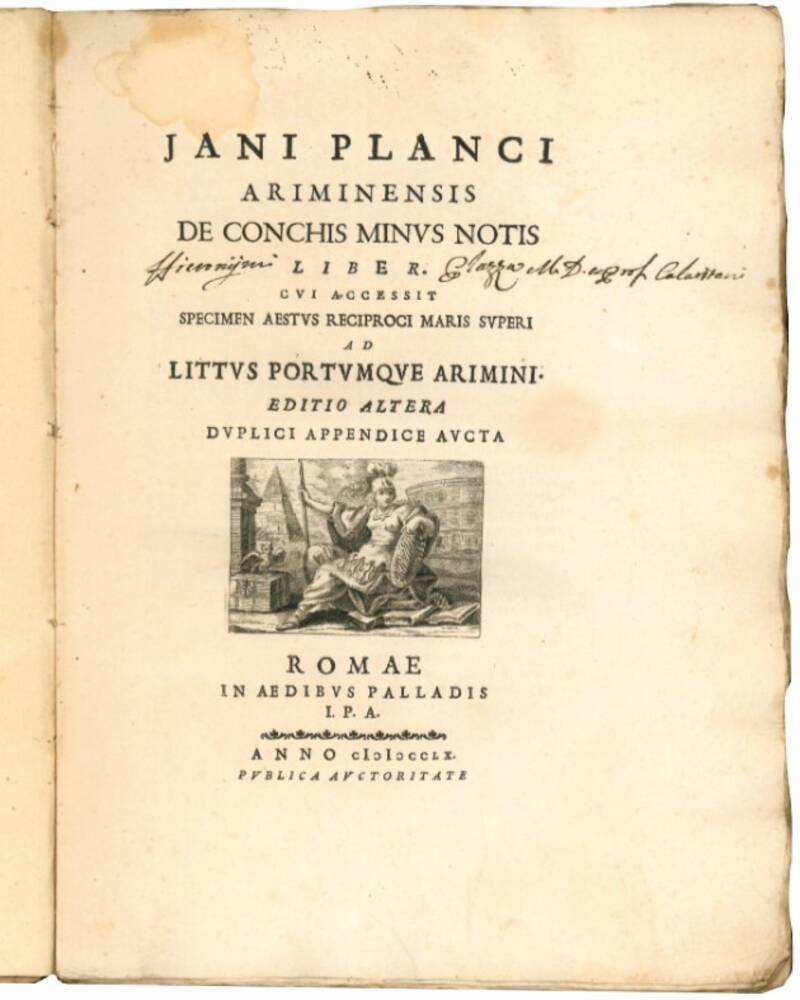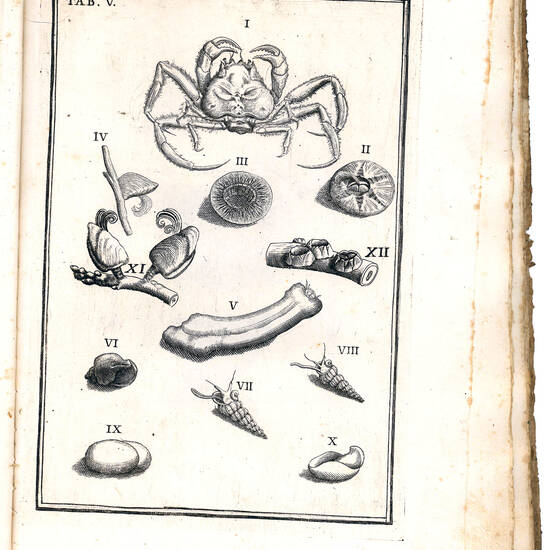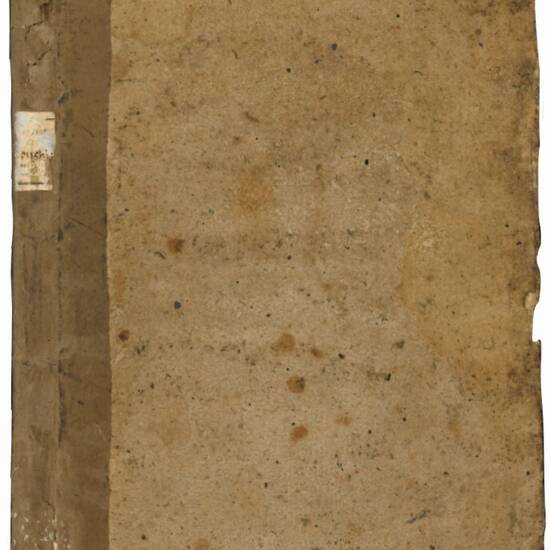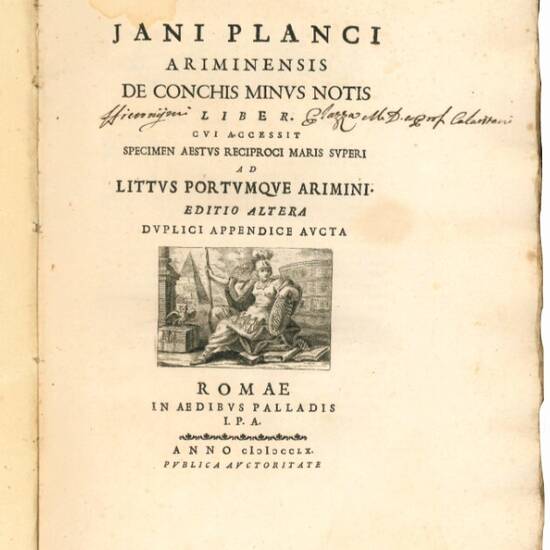4to (292x215mm). 136 pp. and 24 engraved numbered plates. Collation: A-R4. With the printer's woodcut device on the title page: a Minerva sitting on a pile of books with an owl on a box bearing the monogram “P”, in the background the Colosseum. Contemporary cardboards, rebacked, lettering piece on spine (very worn and rubbed). Manuscript ownership entries on the front flyleaf (“M.A. Plazza”) and on the title page (“Hieronymi Plazza MD […] Calaritani”). The edition illustrated with many woodcut headpieces, tailpieces and 24 full-page plates designed by Ercole Lelli and engraved by Carlo Antonio Pisarri, illustrating various mollusc species. On l. F4 begins, with its own title page, the part “Specimen aestus reciproci maris superi ad littus portumque Arimini”. Some scattered foxing, but a good, genuine copy. Uncut with deckle edges.
Second edition (the first edition was published at Padua in 1739). Giovanni Bianchi is commonly known as Janus Plancus, the name he gave himself and under which he published most of his writings. In 1717, he attended medical courses at the University of Bologna, where, under Anton Maria Valsalva and other distinguished professors, he acquired a scientific education in botany, physics, and medicine. An attentive observer and systematic annotator of every natural phenomenon, Bianchi studied the extent and manner of the tides on the Rimini beach and analysed the organic debris of the sandy sediment with the aim of finding living shells similar to the fossil Ammonites. He collected the result of his studies in the present work. Particularly important is the first part, in which some hitherto unknown forms of Foraminifera are described, along with species that are poorly known. This volume remained fundamental to the knowledge of living Foraminifera species for a long time and gave impetus to more in-depth research in that field of naturalistic studies. De conchis minus notis was followed by other important zoological writings. Janus Plancus dealt with many other scientific fields such as astronomy, physical geography, veterinary and medicine; his contribution to the sciences of the 18th century is broad and profound, as confirmed by the eclectic work and rich correspondence he left to us.
Cfr.Cermenati, Evoluzione scienze geologiche p. 189, Diz. Biograf. Italiani X p. 105.
[12848]

